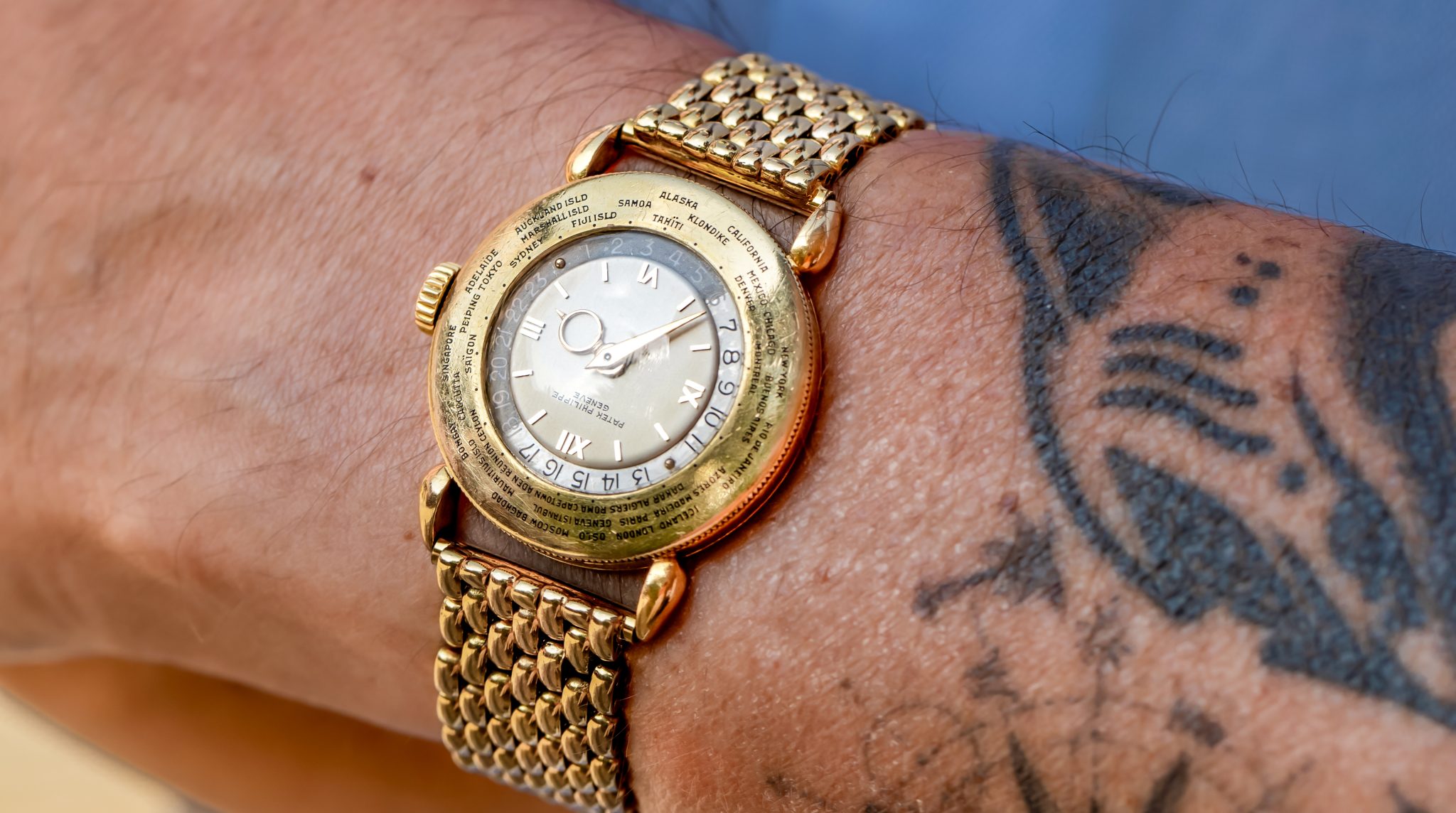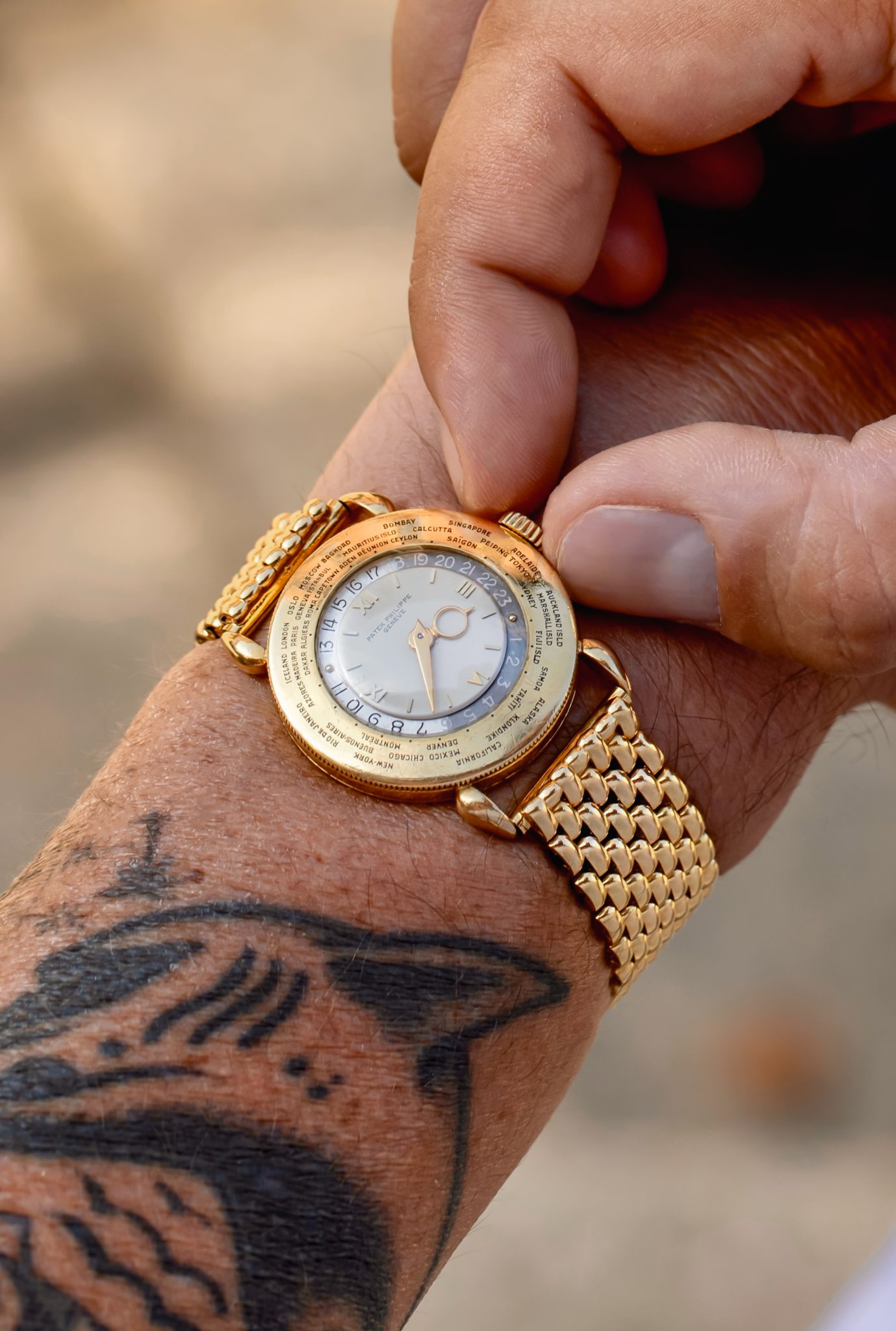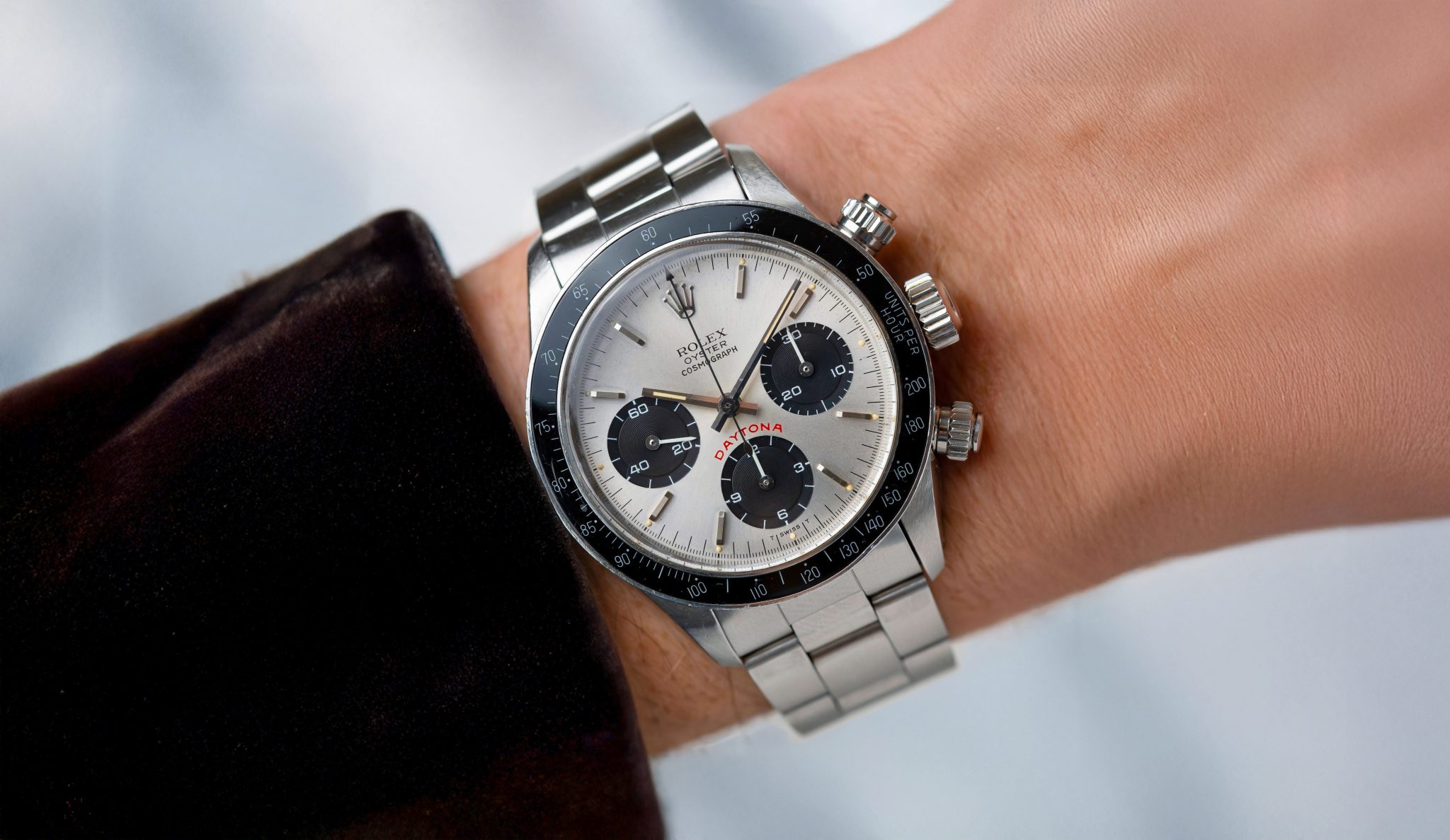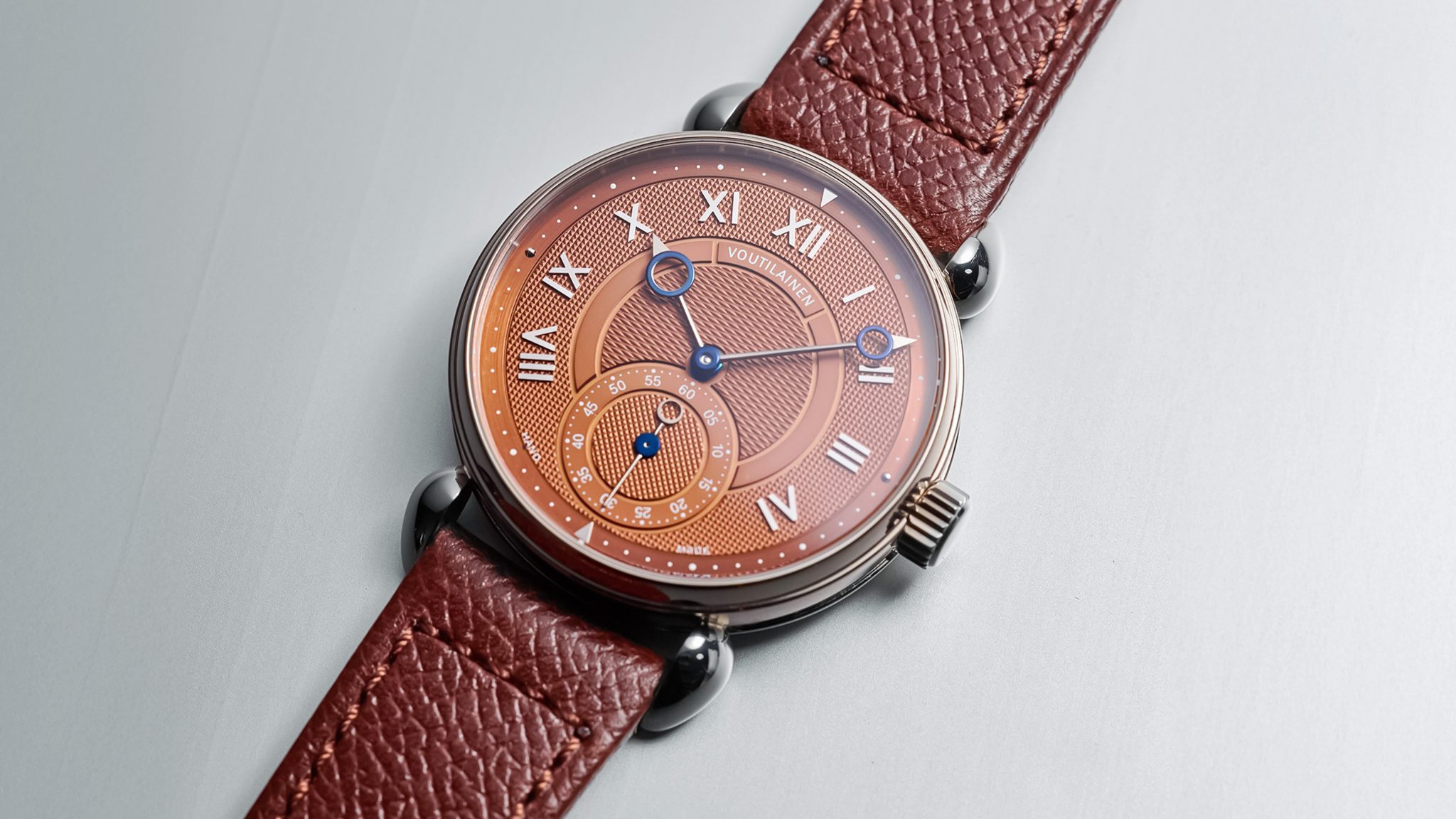
1415 Patek Philippe World Time
The story of the 1415 World Time is in many ways the story of the world becoming connected for the very first time in the early mid-century. It spanned the introduction of both the telegraph and later phone, starting production in 1939 when WW2 also began. For the first time in mankind’s history, it became necessary to often know precisely the time of multiple parts of the world. Watchmaker Louis Cottier created a concentric ring rotating bezel system that became the standard for world time watches as a category, even today. That began here (I’m skipping the extremely rare ref. 515, 96HU, and 542 for the consummate geeks among us).

The 1415 was produced in 82 yellow gold examples, 32 pink gold examples, and just one in platinum. Of those, about half have resurfaced in the market, including the sole platinum watch. Cities on the bezel varied by delivery location and date of production in either English or French. For example, it is easy to approximately date a World Time by the named used for the capital of China at any given time: Peiping, Beijing, Peking, and Nanking have all made appearances as the country progressed. This bezel lists Peiping, named at Mao Zedong’s request, which translates directly as peace (p’ing) of the North. The first few examples bore a 12-ligne pocket watch movement with a wolf winding tooth, later upgraded to this wristwatch movement which goes by calibre 12-120. All were produced in a 31mm case with these lovely tear-drop lugs from 1939 to 1954. Less than a quarter of that production featured cloisonné enamel dials, with the majority this white enamel.

The 1415 has remained a highly collected and stable lot at auctions for the last two decades. Starting at the top, the sole platinum example sold at Antiquorum in 2002 for 7.5M USD (would be worth much more today), widely speculated to have been bought by Lee Kun-hee, head of Samsung. Cloisonné dials usually hammer just under 1M these days, about doubling in value over the last decade. The yellow gold examples such as this depend heavily on condition, but usually command 200-300K USD. The 1415’s relative stability in those high numbers is testament to both Patek Philippe’s unimpeachable reputation and by extension desirability of their earlier history.
The 1415 in any guise is a glimpse into a lost era, both culturally and technically. In many ways, the story of the World Time is the story of globalization. Perhaps I’ll simply let Patek Philippe tell their own story as an ad in period stated, for ‘the man whose interests go beyond the horizon.’ Or, in the modern context as the esteemed rapper Ludacris has described, ‘hoes in different area codes’. I’ll let you decide the application.
This example is quite lovely overall. It is likely a production from 1947-48, as the Patek Philippe signature is stretch and flatter, a transitional signature observed during these years as Patek transitioned from signing PP & Co to PP Geneve. The lugs have their shape, one of the things you don’t want to see is when they’ve been polished so often the reflections go all wobbly. These lugs have great, full, round proportions. Its dial may have been cleaned, or its exceptionally well-preserved. It comes from a well-regarded Italian retailer who specialized in vintage.








